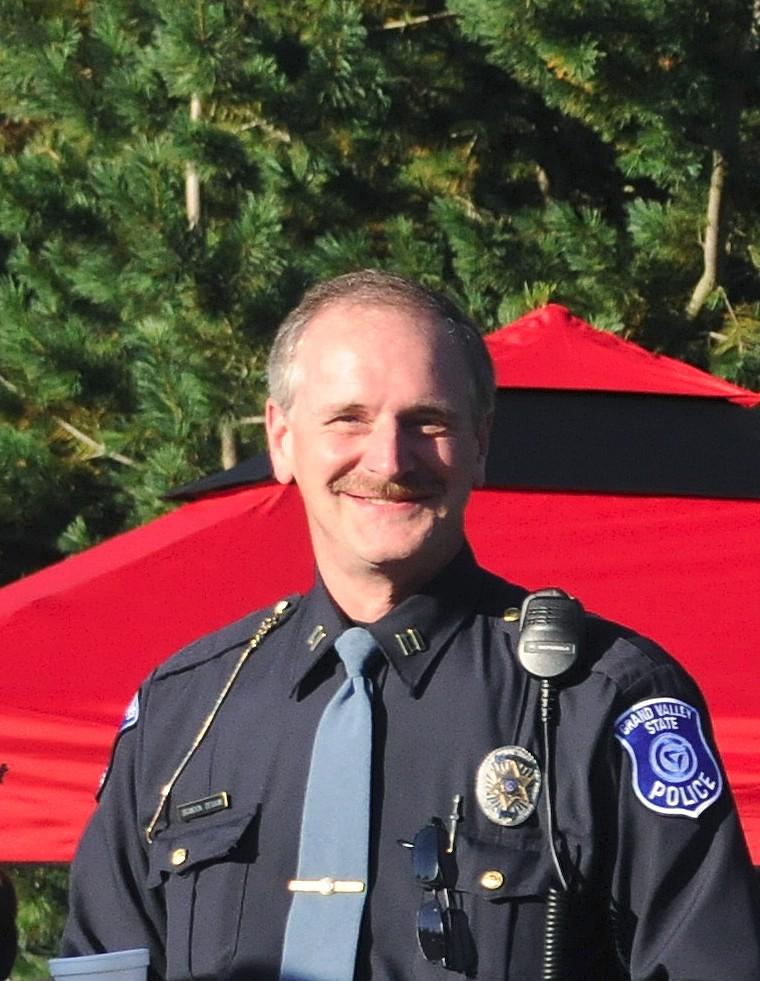Campus departments come together on behavioral team to help at-risk students

GVL Archive Chief of Police Brandon DeHaan
Oct 31, 2011
With an ever-growing population, it can be increasingly difficult for university faculty and staff to ensure the mental and emotional health of the student body and the safety of the university community as a whole. But Grand Valley State University’s behavioral team, founded in 2003, is designed to identify and assist those students who exhibit disruptive, harmful and at-risk behaviors.
The team meets every Monday to discuss students who have been identified as having behavioral problems, suspected alcohol abuse, suicidal ideation and/or disruptive behavior in living centers or classrooms. It consists of representatives from the Dean of Students office, Housing, Pew Campus Security, the Grand Valley Police Department and the Counseling Center.
“GVSU’s behavioral team is often referred to as a model nationally for that type of team,” said Capt. Brandon DeHaan, assistant director of the GVPD. “… As a team, this group identifies appropriate action to assist a referred student and when necessary, identify actions to protect the university community. We work under a spirit of collaboration and cooperation because each unit has an area where they have expertise.”
Students brought to the attention of the behavioral team can be referred by faculty, staff, other students or even members of the departments that comprise the behavioral team itself who have encountered these students as part of their everyday work.
Dean of Students and behavioral team member Bart Merkle said team members’ roles can range from merely discussing worrying actions and behaviors with students to making a wellness plan with students and their families, to intervening when they feel a student poses an immediate danger to themselves or others. Merkle added that in some instances, the team decides that no action is necessary on their part.
“Sometimes it can be as simple as sitting down with a student and saying, ‘People are afraid of you. Are you aware of how you are being perceived? Let’s talk about that,’” he said. “Other times it involves reaching out to a student so they can get in contact with the proper resources they need to get better.”
In the most serious cases, GVSU initiates an involuntary withdrawal process for students who refuse to leave the university or take time off for medical or psychological treatment. Merkle, who oversees the involuntary withdrawal process, said it is “very rare” for GVSU to pursue an involuntary withdrawal for a student, and the Dean of Students Office prefers to work with a student and his or her family to develop a course of action in the student’s best interest.
“Most often, we try to work with the student and their family to encourage them to take some time off for their health and set up a plan for them to take a medical leave of absence and focus on getting better,” he said. “But in the past we’ve had some students who were very resistant to that idea.”
The dean also works to minimize the financial loss to students leaving the university and to help ease them into the transition of focusing on treatment instead of school.
While communication is key to foster trust and cooperation among behavioral team members, representatives from the Counseling Center are still required to protect patient confidentiality.
“The team is careful not to put the Counseling Center in a situation that would compromise confidentiality,” DeHaan said. “However, it is important for the Counseling Center to understand situations in which their clients may be involved and for the team to benefit from their advice and counsel on various issues.”
Merkle also stressed the importance of respecting and maintaining confidentiality within the team.
“If we ask them something they can’t answer, they are very quick to say, ‘I can’t answer that,’” he said of the Counseling Center representatives on the team. “But that doesn’t happen very often because most of us know the types of questions we can and can’t ask in order to maintain that confidentiality.”

























